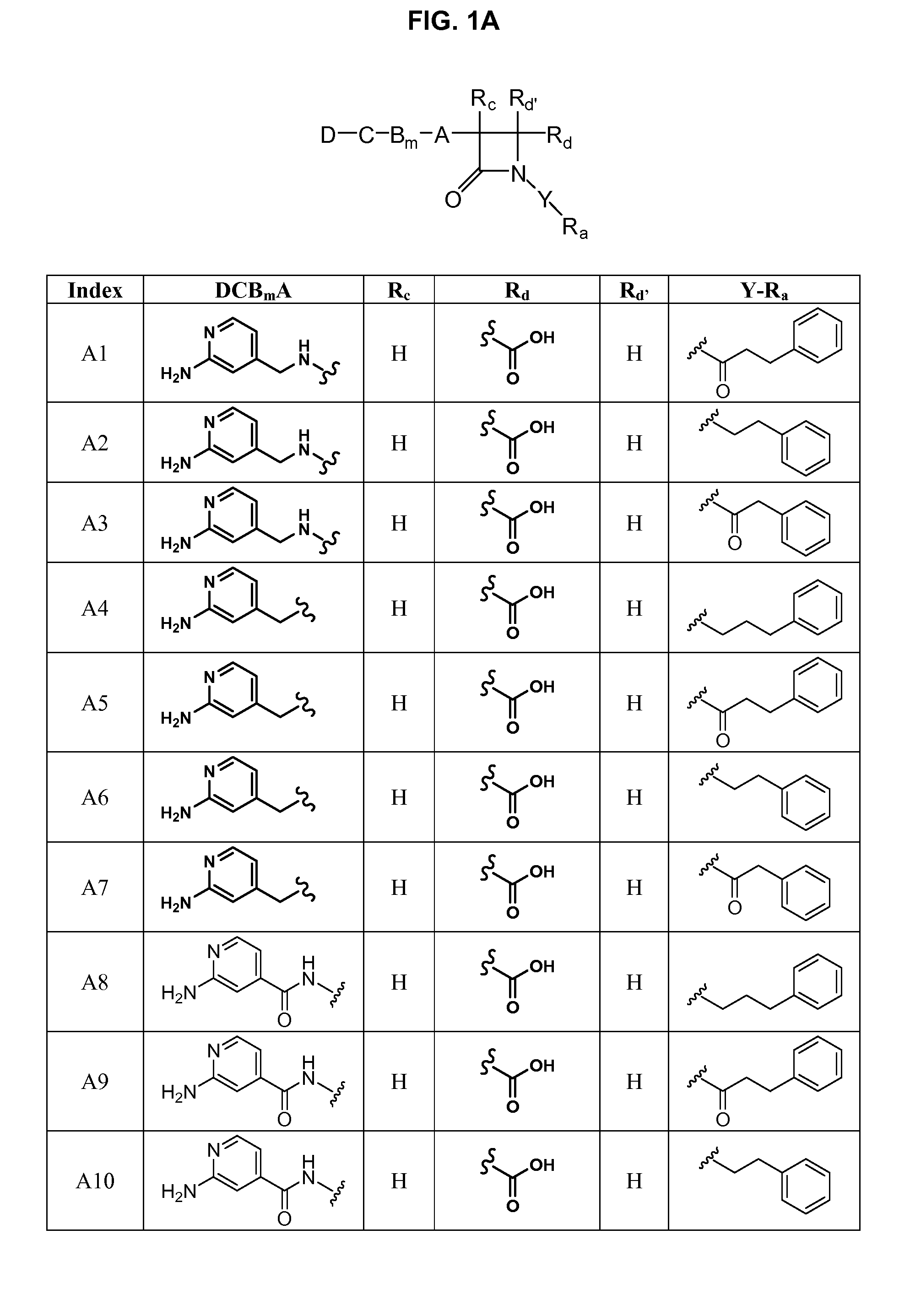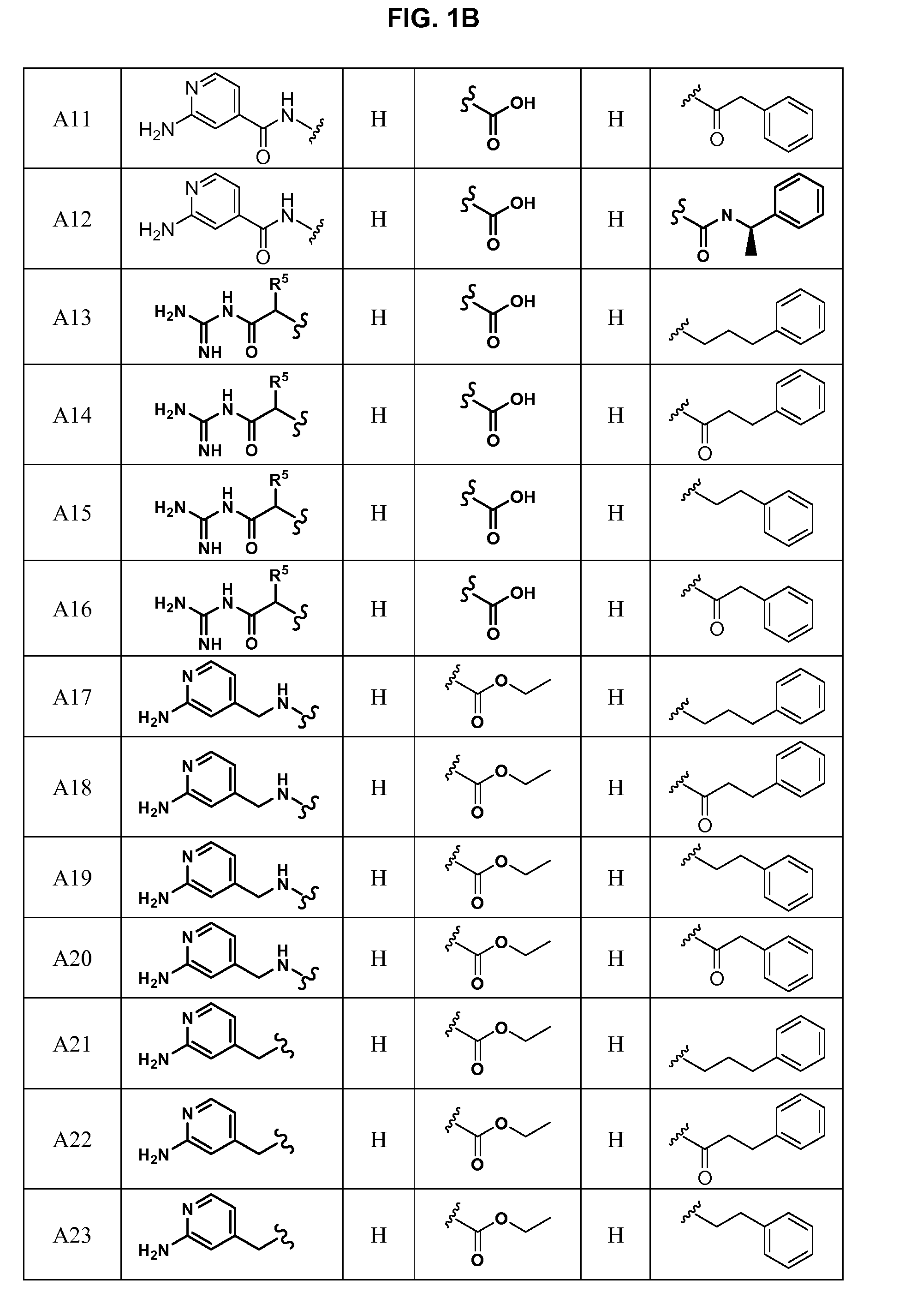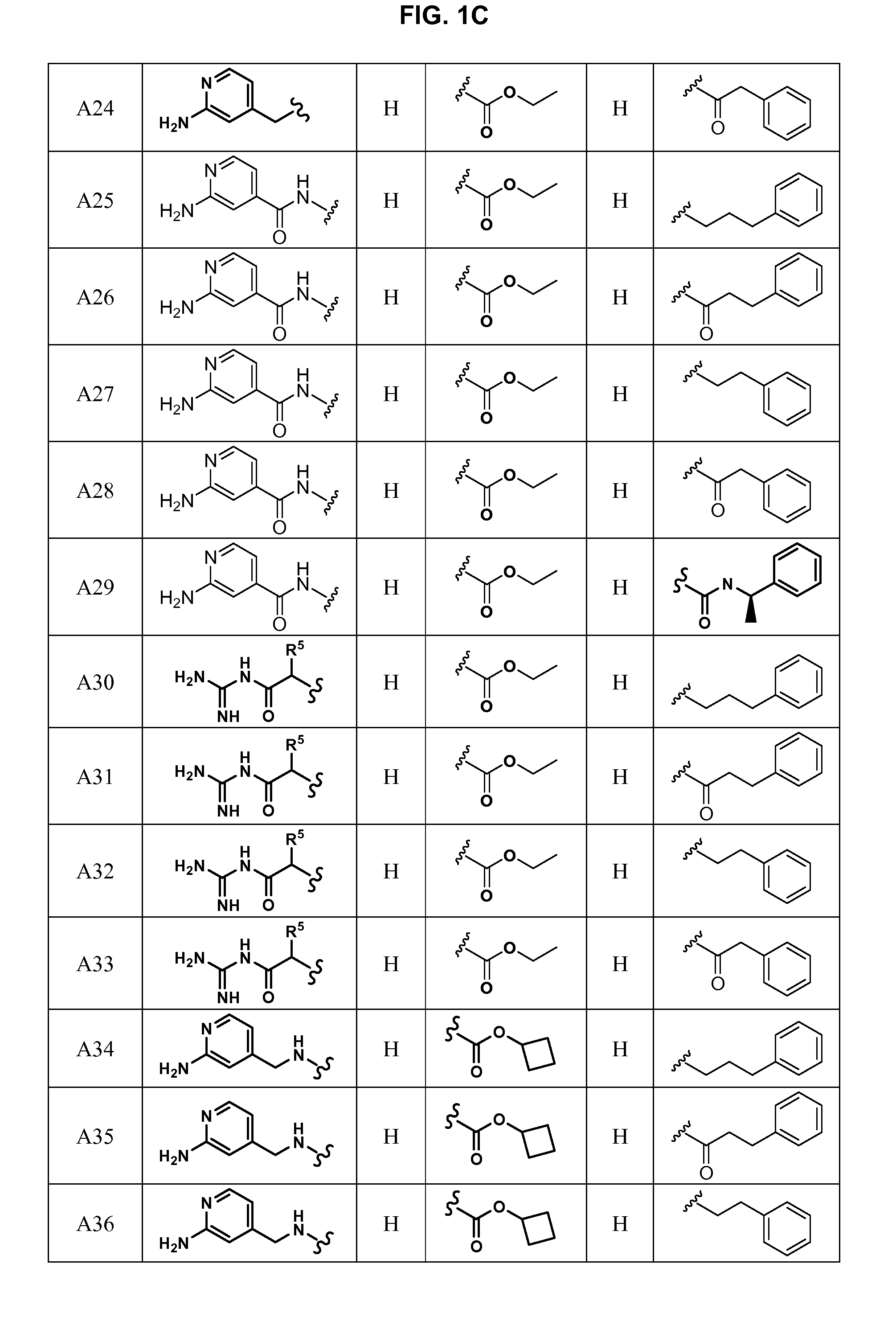Substituted azetidinones
a technology of azetidinone and substituted azetidinone, which is applied in the direction of biocide, drug composition, extracellular fluid disorder, etc., can solve the problems of high risk of gastrointestinal bleeding, high risk of deep venous thrombosis, and high risk of bleeding, and achieve no substantial effect on bleeding times, inhibit thrombosis, and sufficient selectivity and potency
- Summary
- Abstract
- Description
- Claims
- Application Information
AI Technical Summary
Benefits of technology
Problems solved by technology
Method used
Image
Examples
example 1
General Method A for the Preparation of 3-aminopyridyl Beta-lactam Acids
[0319]
[0320]4-Methyl-2-bis(Boc)-aminopyridine (2): Under argon, in a 1-L, 3-necked flask was placed a solution of 2-aminopicoline (16.23 g, 150.1 mmol, 1.0 equiv), triethylamine (41.8 mL, 30.04 g, 300.2 mmol, 2.0 equiv), dimethylaminopyridine (DMAP) (18.3 g, 150 mmol, 1.0 equiv), and CH2Cl2 (300 mL). The mixture was cooled to 5-7° C. in an ice-water bath with magnetic stirring. A solution of Boc-anhydride (100 g, 458.2 mmol, 3.1 equiv) in CH2Cl2 (100 mL) was added dropwise over a period of 30 min. The ice bath was removed and the reaction allowed to warm to room temperature with stirring for 4 h. The reaction mixture was worked up by washing the CH2Cl2 solution with sat. NH4Cl (2×400 mL) followed by sat. NaHCO3 (2×400 mL), and then passing the solution through silica gel (350 mL fritted glass funnel) (elution with CH2Cl2, 500 mL). Rotary-evaporation of the solvent and tert-butanol at 5 mm Hg, 70° C., 18 h provid...
example 2
General Method B for the Preparation of 3-aminopvridyl Beta-lactam methyl esters
[0330]
[0331](2S,3R)-methyl 3-((2-(di-t-butyloxycarbonylamino)pyridin-4-yl)methyl)-4-oxoazetidine-2-carboxylate (13): To a solution of pyridyl beta-lactam acid 5 (0.1 g, 1.0 eq.) in 3 mL methanol and 1.0 mL tetrahydrofuran was added 2.0M trimethylsilyldiazomethane in hexanes (558 μL, 6.0 eq.). After disappearance of all starting material, the reaction was concentrated in vacuo. The crude material was purified by reverse phase HPLC (C18, acetonitrile / water with 0.1% TFA) to yield 13 (45.5 mg, 56%) as a clear oil.
[0332](2S,3R)-methyl 1-((2-benzylphenyl)carbamoyl)-3-((2-(di-t-butyloxycarbonylamino)pyridin-4-yl)methyl)-4-oxoazetidine-2-carboxylate (14): To a solution of beta-lactam ester 13 (11 mg, 1.0 eq) in dichloromethane (0.75 mL) was added 2′-benzylphenyl isocyanate (10 uL, 2.0 eq.), triethylamine (11 uL, 3.0 eq.) and a few drops of DMF to solubilize any undissolved material. The reaction was stirred at ...
example 3
General Method C for the Preparation of 3-aminopyridyl Beta-lactam esters and amides
[0336]
[0337](2S,3R)-benzyl 1-(tert-butyldimethylsilyl)-3-((2-(di-t-butoxycarbonylamino)pyridin-4-yl)methyl)-4-oxoazetidine-2-carboxylate (18): The beta-lactam acid 5 (136 mg, 0.254 mmol) was dissolved in 4 mL dry dichloromethane at room temperature. EDC (73 mg, 3 equiv.), benzyl alcohol (33 mg, 32 uL, 1.2 equiv), and catalytic DMAP (3 mg) were added sequentially. The reaction was stirred overnight under argon, diluted with 20 mL ethyl acetate and 25 mL water. The water layer was washed with 3 portions of ethyl acetate, and the combined organic layers were dried over sodium sulfate, filtered, and concentrated in vacuo. The residue was purified by column chromatography using a gradient of 10 to 30% ethyl acetate in hexane, yielding 18 (72%). MS: 626.3 [M+H]+.
[0338](2S,3R)-benzyl 3-((2-(di-t-butoxycarbonylamino)pyridin-4-yl)methyl)-4-oxoazetidine-2-carboxylate (19): Ester 18 (127 mg, 0.20 mmol) was diss...
PUM
| Property | Measurement | Unit |
|---|---|---|
| molecular weight | aaaaa | aaaaa |
| molecular weight | aaaaa | aaaaa |
| molecular weights | aaaaa | aaaaa |
Abstract
Description
Claims
Application Information
 Login to View More
Login to View More - R&D
- Intellectual Property
- Life Sciences
- Materials
- Tech Scout
- Unparalleled Data Quality
- Higher Quality Content
- 60% Fewer Hallucinations
Browse by: Latest US Patents, China's latest patents, Technical Efficacy Thesaurus, Application Domain, Technology Topic, Popular Technical Reports.
© 2025 PatSnap. All rights reserved.Legal|Privacy policy|Modern Slavery Act Transparency Statement|Sitemap|About US| Contact US: help@patsnap.com



